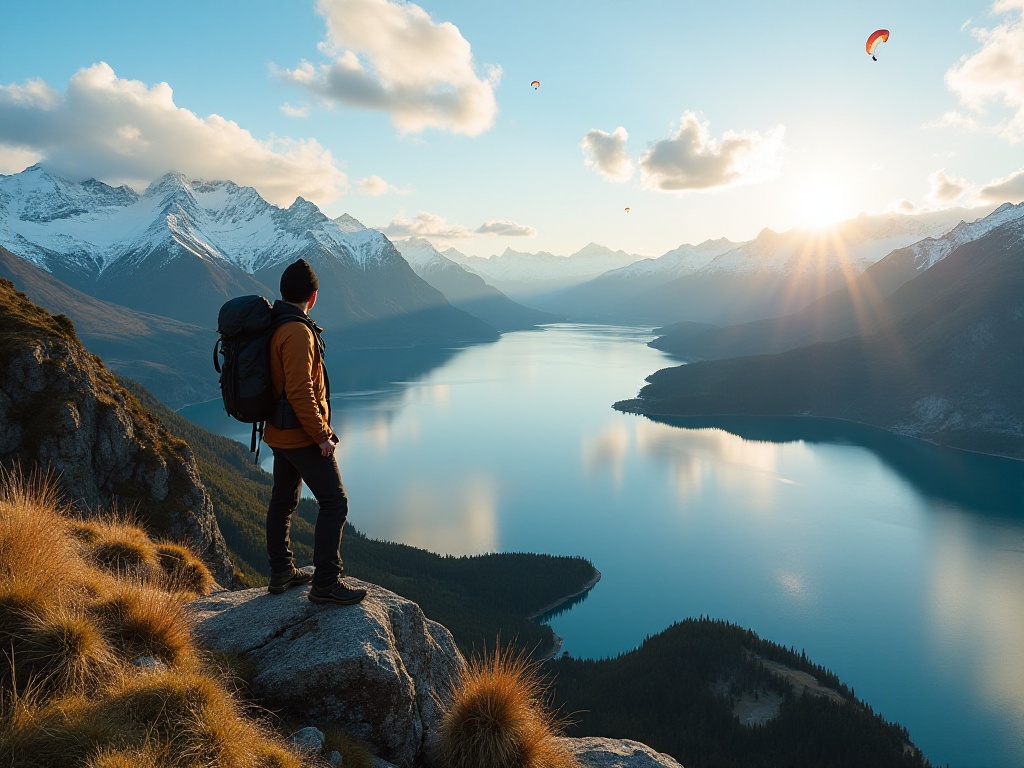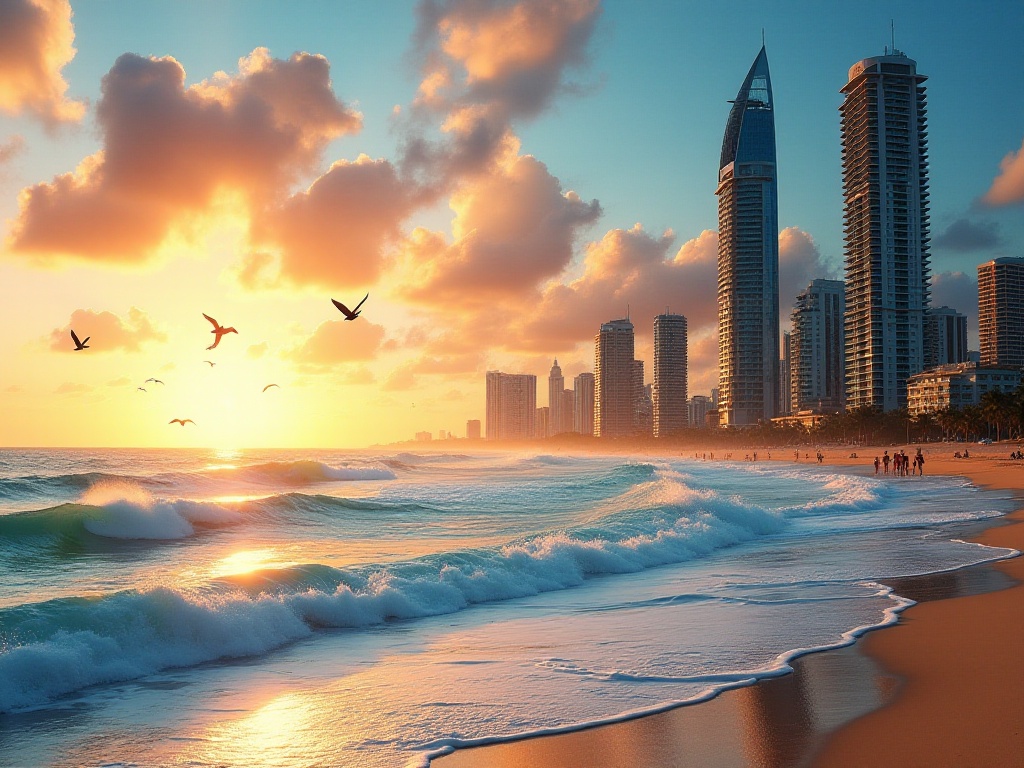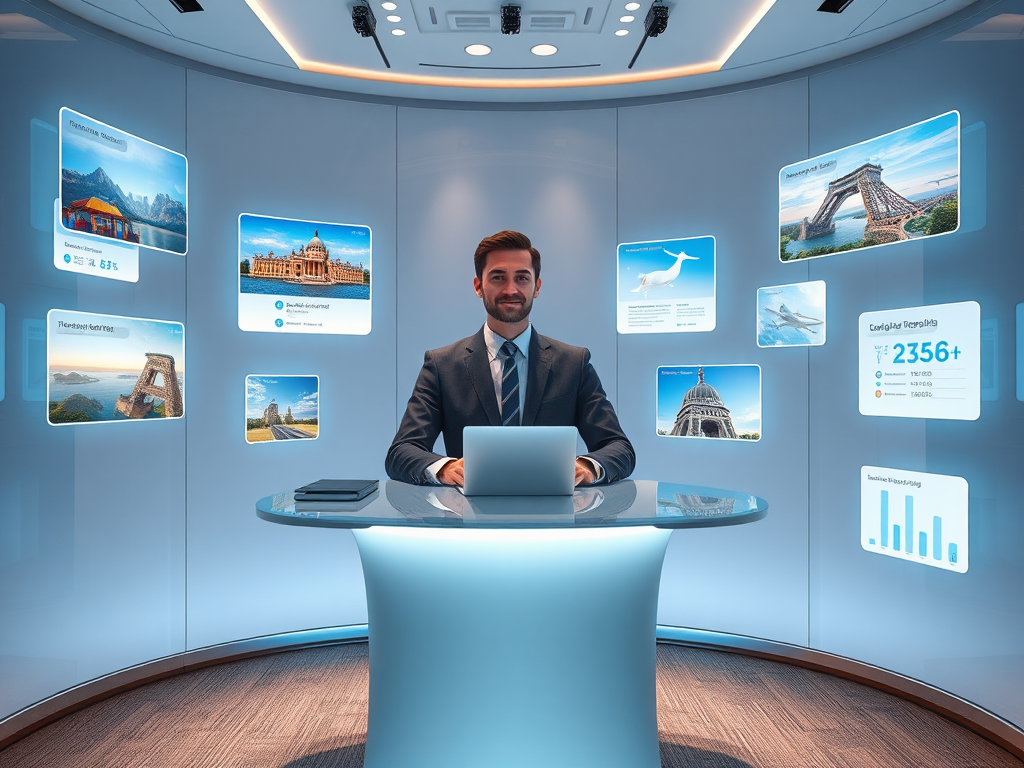
Opening Thoughts
To be honest, every time I pack my bags for a trip, I'm reminded of how I felt when I first opened Lonely Planet. I was still in college then, having saved up several months of living expenses just for a trip to Japan. I remember sitting in the library, holding that thick travel guide, taking notes page by page, planning my route. That feeling of anticipation and excitement still warms my heart when I think about it.
Have you noticed how travel guides have undergone dramatic changes in recent years? From the earliest paper books to today's readily available apps, each transformation has made traveling more convenient. As someone born after 1995, I've witnessed this transformation process, and today I'd like to chat with you about this topic.
The Traditional Paper Era
Talking about paper travel guides is like discussing an old friend who's moved away. Remember those beautifully bound Lonely Planet series? Each one was like a small library, containing the most complete interpretation of a place. From attraction descriptions to transportation strategies, from food recommendations to cultural taboos, everything was recorded in detail.
I particularly love the feeling of turning those pages, the texture of the paper, the scent of ink, and the worn corners that tell stories of countless travelers. I remember my first Lonely Planet was the Japan special edition. I read the Tokyo food section several times, discovering something new with each reading.
I have to say, traditional paper guides have their unique charm. For instance, you never have to worry about running out of battery or having poor signal. Moreover, the focus and immersion you get while reading a physical book is something digital devices can hardly match. I often write my thoughts in the blank spaces or use different colored sticky notes to mark important information. These little habits turn travel planning into a ritual.
Looking at the data, the global paper travel guide market indeed went through a major reshuffling between 2010 and 2020. Sales declined by nearly 60%, which is quite startling. Interestingly though, Lonely Planet maintained growth in certain markets. For example, in 2019, their paper guide sales in the Asian market grew by 15% year-over-year. This shows that even in the digital age, many people still prefer traditional reading methods.
Furthermore, paper guides have a unique advantage: they often provide more in-depth and systematic content. I've experienced this myself: while planning a deep exploration of Yunnan, online guides mostly stayed superficial, but an old paper guide contained many lesser-known local stories and off-the-beaten-path attractions. This content made my travel experience truly unique.

Digital Transformation
With the proliferation of smartphones, travel guides began a quiet revolution. Now when you open your phone, you'll find all kinds of travel apps. From booking flights to finding accommodation, from checking weather to navigation, everything can be handled with just one phone. According to the latest survey data, over 85% of millennials prefer digital platforms when planning travel, which isn't surprising at all.
To be honest, digital platforms have brought many conveniences. Take the World Travel Guide platform, for example, with over 5 million unique visitors per month and an average stay time of 15 minutes. Why is it so popular? Because it's really convenient! Whatever information you want to check, it's just a finger tap away. Plus, the content updates are extremely timely - if a restaurant closes or an attraction undergoes maintenance, you can know about it instantly.
I particularly enjoy using the real-time features of these digital platforms. Once in Paris, when a restaurant I had planned to visit suddenly closed, I immediately found a well-rated alternative nearby through an app. This kind of adaptability is something paper guides can't match.
Digital platforms have another huge advantage: social features. Users can share experiences, post comments, and upload photos in real-time. This genuine feedback is especially valuable for travelers. I often check other travelers' reviews before deciding which restaurant to visit or which hotel to stay in. These reference opinions are often more valuable than official descriptions.
However, to be honest, digital platforms have their shortcomings. For instance, there's the problem of information overload - sometimes you have to read dozens of reviews to choose a restaurant, ending up with decision paralysis. Then there are the limitations of electronic devices, with battery life and network signal being constant concerns.

New Audiovisual Experiences
Speaking of modern travel content, we can't ignore the influence of video programs. The show "Travel Guides" is particularly interesting. Since its debut in 2017, it has presented travel's charm in a completely new way. The first season took us to places like Tokyo, Phuket, and Queenstown, with each episode perfectly set at 38-45 minutes - not too long to cause fatigue, yet long enough to ensure content completeness.
I particularly enjoy this combination of audio and visual experience. Through the lens, we can see the most authentic local features. Whether it's the atmosphere of street alleys or the spectacular views of famous attractions, everything can be directly presented through the screen. Moreover, the production team often includes interesting interactive segments, making viewers feel like they're participating.
The appeal of video content lies in its immersiveness. For example, when watching the Tokyo special, you can not only see the bustling streets of Ginza but also hear the subway arrival announcements and imagine smelling the aroma from roadside ramen stands. This full sensory experience makes travel more vivid.
Additionally, video content can better demonstrate details that are difficult to describe in words. For instance, how to use local ticket machines or how to order correctly - these practical tips are more effective when learned through video.

Future Development Trends
Speaking of the future, I believe travel guides will definitely move toward a "hybrid" development. Just like now when I travel, I carry a Lonely Planet guide while also having various travel apps on my phone. This isn't redundancy, but complementary advantages.
The application prospects of AR technology in the tourism field are particularly exciting. It's predicted that by 2025, this market will reach $28 billion. Imagine walking down the streets of Paris, pointing your phone at the Arc de Triomphe, and seeing historical footage from Napoleon's era, or getting real-time information about nearby restaurants' operating hours and ratings - that experience would be really cool.
VR technology will also bring new possibilities. For example, when deciding on a travel destination, you could first "preview" it through VR devices. Or during actual travel, use VR to recreate historical scenes, making the touring experience richer.
However, I think traditional paper guides won't completely disappear, but rather evolve toward boutique and personalized directions. Future paper guides might focus more on special themes, like exclusively introducing a city's artistic cafes or deeply analyzing local history and culture.

Final Thoughts
Reflecting on my years of travel experiences, I increasingly feel that the form of travel guides isn't the most important thing - what's important is whether they can truly help us better understand and experience a place. Sometimes when I open an old travel guide and see the notes I wrote back then, it brings back particularly wonderful feelings.
Travel itself is a process of continuous exploration and discovery. Whether opening a heavy paper guide or swiping through the latest travel app on your phone, it's all preparation for the next exciting journey.
I'm currently planning a trip to Tibet, preparing to combine paper guides with digital tools. Next time, I'll share with you how to use various tools to plan a perfect independent trip, including route design, budget control, itinerary arrangement, and other specific details. I believe these experiences will be helpful for friends who want to plan their own travels.
The meaning of travel isn't just about reaching the destination, but also about what you gain and share along the way. I hope everyone can find their most suitable way of traveling and create their own wonderful stories.
Next
From Paper Guides to Digital: Exploring the Evolution and Future Trends of Global Travel Guides
Comprehensive analysis of diverse travel guide resources, covering traditional publications like Lonely Planet, online travel platforms, TV travel shows, and digital travel content, providing readers with various channels to access travel information
Discovering the Beauty in Details: Why Are Professional Travel Guides Being Replaced by Personal Travel Experiences?
An in-depth exploration of modern travel guide formats across various media, covering both audiovisual and digital platforms, analyzing their content features, coverage scope, and presentation styles to provide comprehensive travel information
My First Solo Trip Around China: How to Plan a Spontaneous Journey Using Artificial Intelligence
An in-depth analysis of modern travel guide trends, covering AI-assisted planning, social sharing platforms, and digital destination management, exploring the transformation of tourism services towards intelligence and personalization
Next

From Paper Guides to Digital: Exploring the Evolution and Future Trends of Global Travel Guides
Comprehensive analysis of diverse travel guide resources, covering traditional publications like Lonely Planet, online travel platforms, TV travel shows, and digital travel content, providing readers with various channels to access travel information

Discovering the Beauty in Details: Why Are Professional Travel Guides Being Replaced by Personal Travel Experiences?
An in-depth exploration of modern travel guide formats across various media, covering both audiovisual and digital platforms, analyzing their content features, coverage scope, and presentation styles to provide comprehensive travel information

My First Solo Trip Around China: How to Plan a Spontaneous Journey Using Artificial Intelligence
An in-depth analysis of modern travel guide trends, covering AI-assisted planning, social sharing platforms, and digital destination management, exploring the transformation of tourism services towards intelligence and personalization


